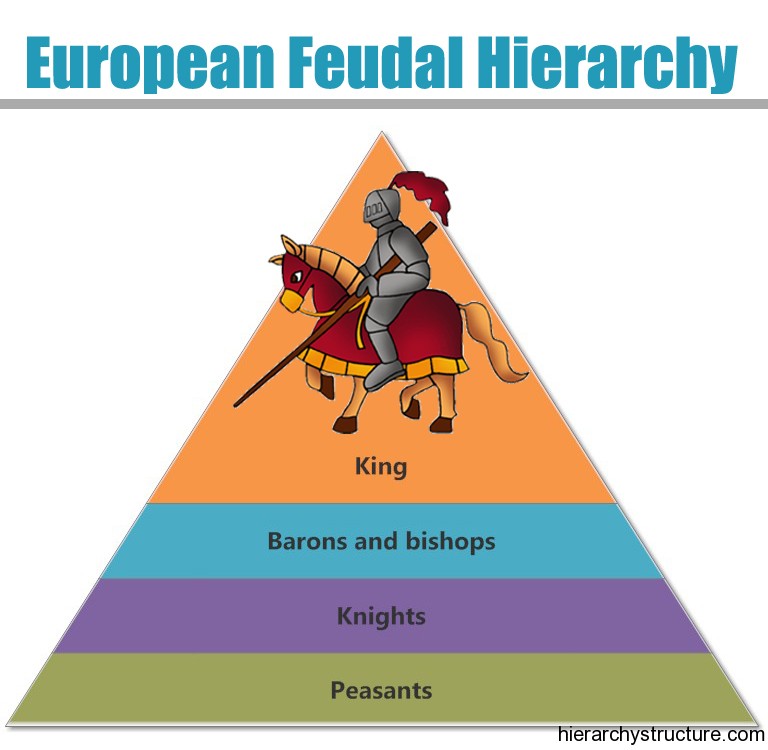The fall of the Roman Empire in Europe during the fifth century was the main reason behind the initiation of European feudal hierarchy. Romans left the Europe and European land & centralization system. The mediaeval period in Europe between 5th to 15th centuries was known as Dark Age, as the people were surrounded by a number of problems like sufferings, hardships, war etc.
There was very little contact between different people. In order to fight their problems and find out solution for them people joined together, and tried to sort out problems that included attacks by foreign invaders, lack of trade, lack of currency, food shortages etc.
As a result of this joint venture the European feudal system came into being. Under the feudal system all the people were divided in a well-defined structure where every category or the class of people had certain duties to perform, and in return they were rewarded with land. The feudal system hierarchy was divided into four categories, where each category used to represent a certain class of people. Every higher level in the hierarchy had greater privileges, power and land than the lower class following them.
1. King
All the land in the kingdom belonged to king and hence king was on the top of the hierarchical structure. King kept about a quarter of his royal estates for his personal usage and divided the rest of the kingdom among his noble men – Barons and Bishops.
2. Barons and bishops
These were known as tenant-in chief who used to get land from the king himself. The tenants in chief were required to perform certain ceremonies of homage, before king could handover the land to them. They were required to take oath that they will serve the kingdom and the king faithfully and will perform their due services throughout their life. The kings required these tenants in chiefs to be always ready to fight for the king, and were also expected to bring along certain number of knights depending on the size of the war. To arrange knights for the war, bishops and barons did the same as the king. They subletted their lands to knights in return for the military services.
3. Knights
Knights were the fighters in the war, and were also known as under tenants as per the European feudal hierarchy. They also gave some parts of their land to peasants for services, and in this way they became able to support and sustain themselves. The under tenants were homage to his lord, just as the lord has done to the king. The king’s fighting strength always depended on the good supply of trained knights.
4. Peasants
After knights came the lowest category or class of people in the feudal system – the peasants. The responsibility of peasants was to farm the land and provide food supplies to the whole kingdom. In return of land they were either required to serve the knight or pay rent for the land.
In this way each category got certain duties to perform and people of every type existed in the European feudal system.
To know more about Egyptian Feudal Hierarchy Click here

